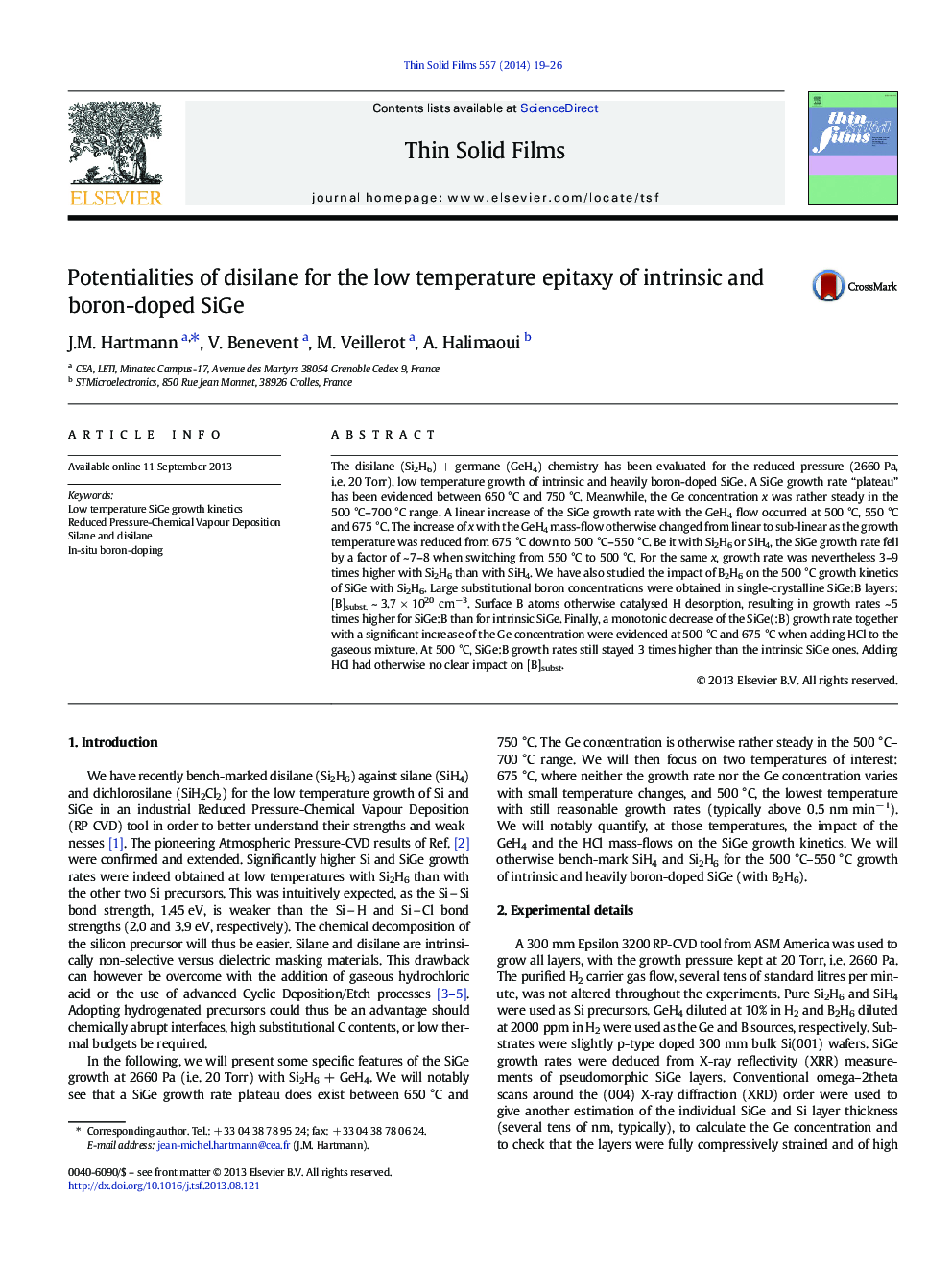| Article ID | Journal | Published Year | Pages | File Type |
|---|---|---|---|---|
| 8035100 | Thin Solid Films | 2014 | 8 Pages |
Abstract
The disilane (Si2H6) + germane (GeH4) chemistry has been evaluated for the reduced pressure (2660 Pa, i.e. 20 Torr), low temperature growth of intrinsic and heavily boron-doped SiGe. A SiGe growth rate “plateau” has been evidenced between 650 °C and 750 °C. Meanwhile, the Ge concentration x was rather steady in the 500 °C-700 °C range. A linear increase of the SiGe growth rate with the GeH4 flow occurred at 500 °C, 550 °C and 675 °C. The increase of x with the GeH4 mass-flow otherwise changed from linear to sub-linear as the growth temperature was reduced from 675 °C down to 500 °C-550 °C. Be it with Si2H6 or SiH4, the SiGe growth rate fell by a factor of ~ 7-8 when switching from 550 °C to 500 °C. For the same x, growth rate was nevertheless 3-9 times higher with Si2H6 than with SiH4. We have also studied the impact of B2H6 on the 500 °C growth kinetics of SiGe with Si2H6. Large substitutional boron concentrations were obtained in single-crystalline SiGe:B layers: [B]subst. ~ 3.7 Ã 1020 cmâ3. Surface B atoms otherwise catalysed H desorption, resulting in growth rates ~ 5 times higher for SiGe:B than for intrinsic SiGe. Finally, a monotonic decrease of the SiGe(:B) growth rate together with a significant increase of the Ge concentration were evidenced at 500 °C and 675 °C when adding HCl to the gaseous mixture. At 500 °C, SiGe:B growth rates still stayed 3 times higher than the intrinsic SiGe ones. Adding HCl had otherwise no clear impact on [B]subst.
Related Topics
Physical Sciences and Engineering
Materials Science
Nanotechnology
Authors
J.M. Hartmann, V. Benevent, M. Veillerot, A. Halimaoui,
